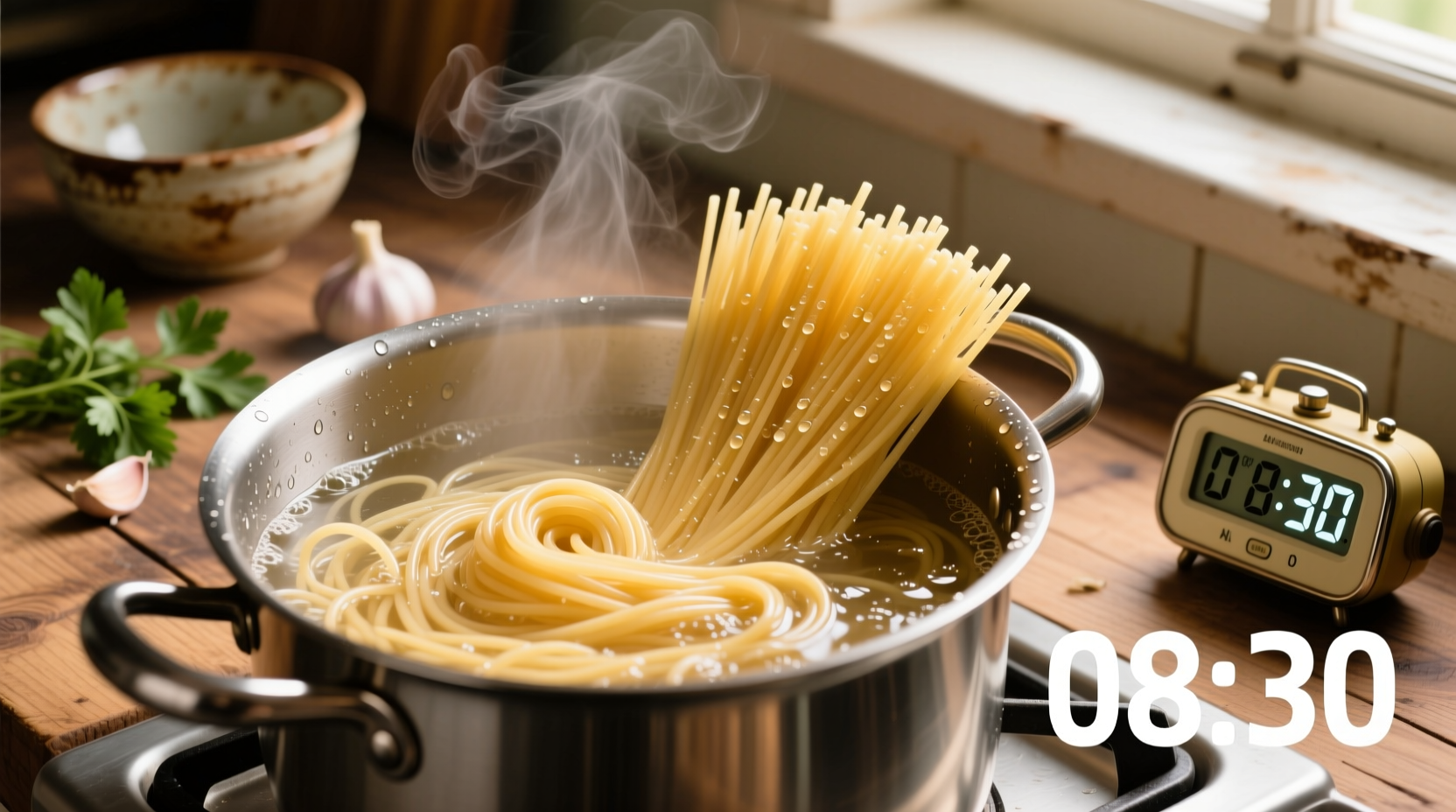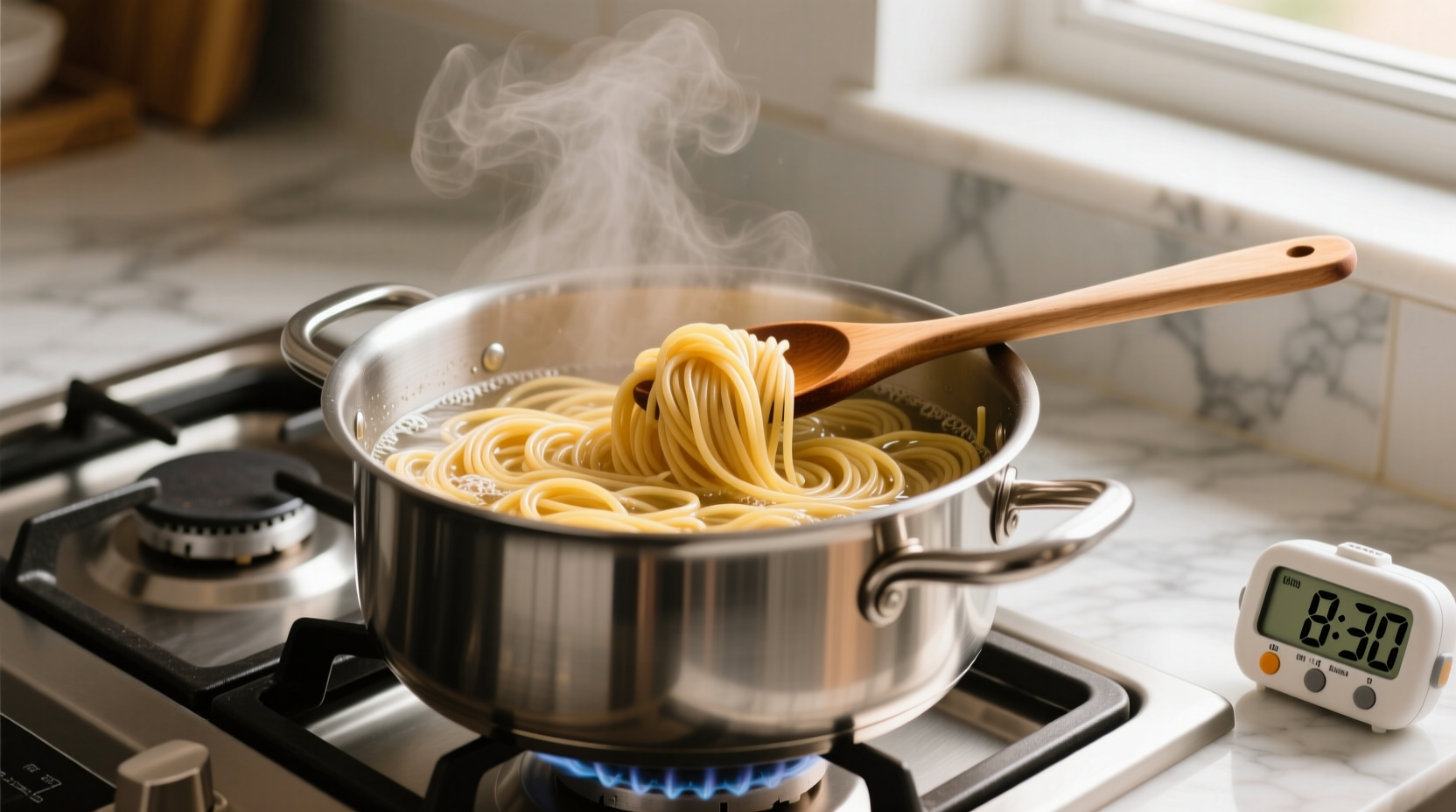Spaghetti typically takes 8-12 minutes to cook to al dente perfection, depending on thickness and brand. Start testing at 8 minutes for thinner varieties and 10 minutes for standard spaghetti.
The Complete Guide to Perfectly Cooked Spaghetti
Getting spaghetti cooking time right separates good pasta from great pasta. Undercooked spaghetti feels chalky and hard, while overcooked strands turn mushy and lose their ability to hold sauce properly. This guide provides precise timing information plus practical techniques professional chefs use to achieve perfect results every time.
Why Precise Cooking Time Matters
Proper spaghetti cooking time directly impacts texture, flavor absorption, and overall dish quality. Pasta continues to cook slightly after draining due to residual heat, so pulling it 1-2 minutes before the package time ensures perfect al dente texture. The USDA's Food Safety and Inspection Service confirms that properly cooked pasta reaches an internal temperature of 180-190°F (82-88°C), the ideal range for optimal starch gelatinization without becoming waterlogged.
Your Step-by-Step Spaghetti Cooking Process
1. Water Preparation (The Foundation)
Use 4-6 quarts of water per pound of spaghetti. This ratio prevents sticking and ensures even cooking. Add 1-2 tablespoons of salt per gallon of water after the water reaches a rolling boil. Contrary to popular belief, salt doesn't significantly raise the boiling point but does enhance flavor absorption. The American Chemical Society confirms salted water allows pasta to absorb seasoning more effectively during cooking.
2. Adding Spaghetti Correctly
Gently lower spaghetti into boiling water, stirring immediately to prevent clumping. For long strands, let them cascade into the pot rather than breaking them. Stir every 2-3 minutes throughout cooking to maintain separation.
3. Timing Your Spaghetti
Begin timing after the water returns to a boil. Standard spaghetti typically requires 10-12 minutes, while thinner varieties need 8-10 minutes. Always check 1-2 minutes before the package's suggested time. For authentic Italian results, aim for al dente (literally "to the tooth")—tender with a slight resistance at the center.
| Pasta Type | Standard Cooking Time | Al Dente Time | Texture Indicator |
|---|---|---|---|
| Thin Spaghetti (No. 3) | 7-9 minutes | 6-7 minutes | Slight firmness at core |
| Standard Spaghetti (No. 5) | 10-12 minutes | 8-10 minutes | Visible white core when bent |
| Thick Spaghetti (No. 7) | 12-14 minutes | 10-12 minutes | Small white center remains |
| Whole Wheat Spaghetti | 12-15 minutes | 10-12 minutes | Firm but not gritty |
Key Factors That Affect Cooking Time
Altitude Adjustments
At higher elevations, water boils at lower temperatures, extending cooking times. The FDA recommends adding 25-50% more cooking time above 3,000 feet elevation. For example, spaghetti that takes 10 minutes at sea level may require 12-15 minutes in mountainous regions.
Visual and Textural Doneness Indicators
While timers help, professional chefs rely on these physical cues:
- The Bend Test: Gently bend a strand - perfectly cooked spaghetti shows a small white core at the thickest part
- The Bite Test: Taste a strand 1-2 minutes before expected finish time - al dente pasta offers slight resistance but no hard center
- The Float Test: Properly cooked spaghetti sinks initially then floats slightly as starches release

Avoid These Common Spaghetti Mistakes
Adding Oil to Water
Never add oil to pasta water. This creates a slippery coating that prevents sauce from adhering properly. The Culinary Institute of America's research shows oil reduces starch release, which is essential for sauce emulsification.
Overcrowding the Pot
Too much pasta in insufficient water causes temperature drops and uneven cooking. Cook in batches if necessary, maintaining the 4-6 quarts water per pound ratio.
Discarding All Pasta Water
Reserve 1 cup of starchy pasta water before draining. This liquid gold helps sauces emulsify and cling to spaghetti. As professional chefs note, "the difference between a sliding sauce and a clinging sauce is often that starchy water."
Perfect Timing for Different Results
Adjust cooking time based on your desired outcome:
- Classic Al Dente: Package time minus 2 minutes (firm bite with slight resistance)
- Traditional Italian: Package time minus 1 minute (more pronounced bite)
- For Casseroles: Package time minus 3 minutes (pasta continues cooking in oven)
- For Cold Pasta Salads: Full package time (needs firmer texture when chilled)
When to Trust the Package vs. Your Judgment
Package times provide a baseline, but multiple factors affect actual cooking time:
- Water temperature stability (maintain gentle boil, not rolling)
- Pot material (copper heats faster than stainless steel)
- Starch concentration (water becomes starchier as cooking progresses)
Always taste test starting at 8 minutes regardless of package instructions. The University of California's Department of Food Science confirms that visual and textural assessment remains more reliable than strict timing for achieving perfect pasta texture.











 浙公网安备
33010002000092号
浙公网安备
33010002000092号 浙B2-20120091-4
浙B2-20120091-4